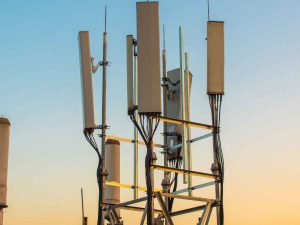3G Sunset Strategy and 5G Optimization

Course Overview
5G is set to revolutionize the way we communicate, collaborate and exchange data. The 5G New Radio (NR) system will support enhanced Mobile Broadband (eMBB), Ultra Reliable Low Latency Communications (URLLC), and massive Machine Type Communications (mMTC).
5G NR is far more complex than previous generations of mobile networks and will still need to work together with current 4G LTE and WiFi radio access technologies, leading to challenges in network planning.
Radio network planning is no longer a standalone business activity. It needs to connect to the wider OSS/BSS eco-system for maximum impact. In this course, you will learn how to plan for seamlessly and reliably integration with other systems, including inventory, site acquisition, site rollout, configuration management, and performance management.
5G need to be deployed on top of existing networks in the most cost-effective manner possible. This requires learning radio network planning with existing 2G, 3G and 4G support. The 5G processes which are shared with the legacy technologies.
Target Audience
This course is designed to provide a deep understanding and learning of the 5G concepts to technical engineers, managers and technicians, consultants, communications professionals, network professionals and others who plan on using, evaluating, or working with 5G networks.
Duration & Training Format
- Classroom: 5 days
- LIVE Virtual: 35 hours
- A minimum of 8 or more participants is required for a Classroom session to commence.
- A minimum of 6 or more participants is required for a LIVE Virtual session to commence.
- LIVE Virtual courses can be conducted for 5 hours or 7 hours daily. Please note that the number of training days will be extended if you opt for 5 hours daily.
Upcoming Course Dates
5 – 9 May 2025 (Mon – Fri), GMT +8
If you are keen on attending this course, please register your interest via our course enquiry form.
Course Outline
1. Why are 2G and 3G being Sunset?
- Reuse Radio Frequencies for 4/5G Deployments
- Decrease Maintenance Cost by Reducing the Number of Radio Networks
- Check Backward Compatibility Enabled
- Internet of Things Latency and Future Apps
- Achieve High Speed, Low Latency, Real Time
2. 2G and 3G being Sunset Challenges
- Regulation
- Regulator’s Permission: Get Regulators’ Support to Shut Down 2G/3G
- eCall Migration toward IMS Voice
- Device
- 4G Entry Level Phone: Promote Entry Level Phone Industry
- IMS Voice Phone: Recommend Industry to enable IMS Voice by Default
- Migrate 2G/3G M2M to 4G MIoT (LTE-M and NB-IoT) by promoting the Migration of
- Legacy 2G/3G Use Case to 4G
- Network
- Develop IMS Voice in the Home Network, including Postpaid and Prepaid Offers
- Promote IMS Voice Roaming
- SIM Replacement to offer 4G SIM Card, or promote SIM Replacement Solution
- Define Network Sunset Initiation Criteria: How to make 2G or 3G Phase out based on the Situation of 2G/3G Network, Revenue, User, Expenditure and 4G Network Readiness
- Migrating 2G/3G Users to LTE by identifying the User Category and Develop the Migration Policy (2G User with no Data Requirement, 2G User with less Data Requirement, 2G/3G User with 4G Phone), offer different Promotion
- Spectrum Refarming (Partial or Full)
3. Potential Interworking Architecture
4. Service Availability
5. Redesign IMS Core for Voice – Converged Voice Services
- VoLTE: When no 5G Core is Deployed, Voice for 5G Users is delivered through VoLTE Network (LTE Radio, EPC and IMS), while 5G eMBB Services are delivered through 5G Radio and the Enhanced LTE/EPC.
- Vo5G/VoNR: When 5G Core is Deployed, Voice is Leveraged using the 5G Core Functions and IMS, while the 5G Use Cases are Delivered by the NR and the 5G Core.
- VoWiFi: The Access Agnostic 5G Core Supports Fixed and Wireless Connectivity that includes Licensed, Unlicensed, 3GPP and non-3GPP Technologies, to deliver Converged Voice Services.
6. How to Implement Spectrum Refarming
Refarming is a cost-effective way to increase capacity for UMTS/LTE without the need to bid for new spectrum. Refarming is not limited to GSM, since UMTS spectrum can also be refarmed to increase LTE capacity. Another interesting benefit for operators is that lower frequencies (usually allocated to GSM networks) provide much better coverage.
- Sufficient Contiguous Spectrum to Support the Simultaneous Operation of 2 or 3 Technologies in a Frequency Band
- Simultaneous, Mixed Use of Frequency Bands presents Challenges regarding Bandwidth Allocation across Bands
- Use both Sides of the Spectrum Adjacent to the Dividing Point
- Adjacent Channel Interference – Use Guard Bands
- New Frequency Planning and Implementation
7. Spectrum Refarming Framework
8. What’s New in 5G, Vision and Beyond
- Beamforming
- Massive MIMO
- Dynamic Spectrum Access (DSA)
- Internet of Things (IoT)
- Small Cells
- Software-Defined Radio (SDR)
- Centralized RAN vs. Cloud RAN
- NFV, SDN, and Cloud Networking
- Massive Machine Communication (MMC)
- Massive Internet of Things (IoT)
- Ultra-Reliable Communication (URC)
- 5GPP
m. 5G Forum - 5GMF
- 3GPP
- ITU-T’s IMT-2020
- 5G Americas
- ETSI
9. 5G Architecture – CORE
- Service Based Architecture
- From Network Function to Network Function Service
- Cloud Adoption
- Network Slicing
- Slice Management and Orchestration
- gNB and ng-eNB Functionalities
- 5G Core Architecture – Network Functions:
- AMF Functionalities
- AMF Functionalities
- UPF Functionalities
- SMF Functionalities
- 5G Network Interfaces
- Network Slice Selection Function
- External Exposure
- Internal Exposure
- Network Repository Function
- Unified Data Management
- Unified Data Repository
- Policy Control Function
- Authentication Server Function
- NG Interface
- Xn Interface
- Control Plane
- User Plane
- 5G Radio Protocol Architecture
- Multi-RAT Dual Connectivity
- Comparing LTE and 5G Core
10. 5G Architecture – RAN and Air Interface
- 5G/NR RAN Architecture
- Functional Split between NG-RAN and 5GC
- 5G Radio Architecture Options for Cloud RAN gNB
- Functional Split in the gNB
- 5G Advancement and Air Interface
- 5G Spectrum Outlook
- Radio Parameter Comparison – LTE and NR
- 5G NR – The New Radio Interface for 5G
- Scalable OFDM
- Advanced LDPC Channel Coding
- Ultra-Reliable Low-Latency Communication (URLLC)
- 5G NR – The New Radio Interface for 5G
- Beamforming in mm-Wave (30 GHz to 300 GHz)
- Massive MIMO and Beamforming
11. 5G NR Physical Layer
- 3GPP 5G NR Physical Layer Specs
- 5G Frame Structure Enhancements
- LTE Frame Structure
- LTE Generic Frame Structure
- LTE DL Physical Layer Parameters
- 5G Frame Structure – Resource Grid
- Numerology – Subcarrier Spacing
- Numerology and Slot Length
- 5G Frame Structure – Scalable NR Slot Duration
- 5G Channel Structure
- Logical Channels
- Transport Channels
- Physical Channels and Signals
- 5G Channel Structure Vs LTE
- DL Channels and SS/PBCH block
- UL Channels and Signals
12. 5G Protocols
- UE-5GC Control Plane Protocol Stack
- UE-5GC User Plane Protocol Stack
- 5G NR-RAN Control Plane Protocol Stack
- 5G NR-RAN User Plane Protocol Stack
- 5G-NR Layer 3 (RRC) Functions
- 5G-NR Layer 2 Functions
13. 5G RF Design
- U5G Propagation Models
- 5G Indoor and Outdoor Small Cell Design
- 5G Propagation Model Equations and Formulas
- RF Design Inputs
- RF DL Link Budget
- RF UL Link Budget
- Traffic Mapping
- RF Planning Tools
- Traffic Modelling
- RF Prediction
- Analysis and Reiteration of the Results
14. Optimizing 5GS QoS System Procedures
- 5G End to End Call Flow
- 5G NR RRC Procedure and its States
- RRC State in NR
- NR RRC Interaction with LTE RRC
- NR RRC Interaction with UTRAN / GERAN RRC
- RRC Idle
- Synchronization Signals
- Broadcast and SI
- RRC Connection Setup
- RRC Reconfiguration
- DL Information Transfer
- UL Information Transfer
15. 5G RF Parameter Planning and Optimization
- PCI Planning
- RACH Planning
- Power Control
- TA and RNA Planning
- Cell Selection and Reselection
- Handover
- 5G Throughput and Capacity Calculation
- 5GS to EPS Handover
- EPS to 5GS Handover
- Interworking with Non-3GPP Networks
- Non-3GPP Access Registration
- Establishing PDU Sessions
- Modifying a PDU Session
- Utilizing PDU Sessions
16. Optimizing 5G End to End KPIs – Accessibility, Integrity, and Utilization
- Accessibility
- Retainability
- Availability
- Mobility
- Integrity
- Utilization
17. 5G Mobility Scenarios – Handover Optimization
- Blind Handover Optimization
- Coverage Based Intra Frequency Handover Optimization
- Coverage Based Inter Frequency Handover Optimization
- Frequency Priority Based Inter Frequency Handover Optimization
18. Optimizing Layer 3 Parameters – Inter Frequency Handover
- A1 Threshold
- A1 Time to Trigger
- A1 Hysteresis
- A2 Threshold
- A2 Time to Trigger
- A2 Hysteresis
- A5 Threshold 1 and Threshold 2
- A5 Time to Trigger
- A5 Hysteresis
19. 5G Low Throughput Troubleshooting in SA/NSA
- 5G NR Throughput Calculation
- Factors and Prerequisites to Reach Maximum 5G Throughput
- Number of Grant and RB Troubleshooting
- Low MCS Troubleshooting
- High IBLER Troubleshooting
- Low rank Troubleshooting
Note: A Certificate of Completion will only be issued upon achieving at least 75% attendance for the course.
Pre-requisites
Prior knowledge of 3G and 4G will be an added advantage for participants.



